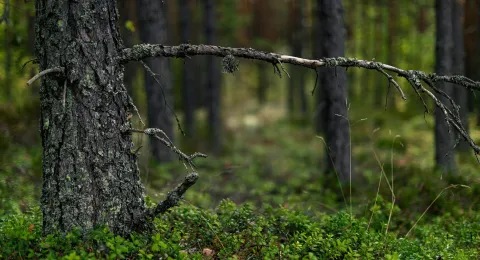Finnish industry produces approximately 28 million tons of bio-based carbon dioxide emissions (bio-CO2) annually, which makes Finland’s emissions the second largest (40 %) in Europe. The majority, approximately 24 million tons, is generated in pulp production.
Bio-based carbon dioxide is the only type of carbon dioxide that EU regulations approve for recycling into renewable fuels of non-biological origin (RFNBO).
”The demand for bio-based CO2-derived fuels is expected to rise rapidly throughout the 2030s.”
Because of the EU's blending mandate for RFNBO fuels, the demand for bio-based CO2-derived fuels is expected to rise rapidly throughout the 2030s. Regulatory requirements for replacing oil-based fuels are coming into effect quickly.
Finland’s capacity to produce RFNBO fuels from bio-based carbon dioxide using green electricity corresponds to double the country's current domestic fuel consumption. The annual revenue potential from the production could amount to 10–20 billion euros.
The Curious People newsletter shares our solutions for helping build resilient communities, industry, and businesses while promoting the energy transition and the regenerative use of natural resources.
Planning lags behind
To respond to market development, fuel production must be ramped up quickly. Most Finnish bio-CO2 sources – adding up to roughly 24 million tons – originate from pulp mills. Forest industry companies are currently investigating possibilities for bio-based carbon dioxide capture, but their efforts remain limited. The largest wood processing industry companies in Finland are UPM, Stora Enso, and Metsä Group.
Meeting merely the EU's RFNBO kerosene jet fuel demand in 2035 – estimated at 500,000 tons – would require bio-CO2 emissions equivalent to those of approximately three large pulp mills, totalling around 7.5 million tons.
”The required technology is, however, available.”
The planning of bio-based carbon capture and utilisation is moving too slowly and is locked by forest industry companies. The required technology is, however, available (technology readiness level 9).
The business opportunity will not exist forever, because the development of direct air capture is advancing and is expected to become significant after 2040. Related technology is being developed, with Europe as the world leader. However, China is expected to overtake soon.
The Government and forest owners could speed up progress
To realise the economic value of bio-based carbon dioxide utilisation, the Finnish Government should speed up its deregulation. This could involve incentives, the establishment of bio-CO2 emission trading, or a combination of both.
Given the inherent value of bio-CO2, companies should proactively seek partnerships with businesses possessing market access and advanced technologies. This would improve the industry's profitability and operating possibilities in Finland.
Another alternative is for forest owners to start demanding that wood sales include carbon capture and utilisation measures and commitments from pulp mills. This could be done through the Central Union of Agricultural Producers and Forest Owners (MTK).

Panu-Petteri Laaksonen





